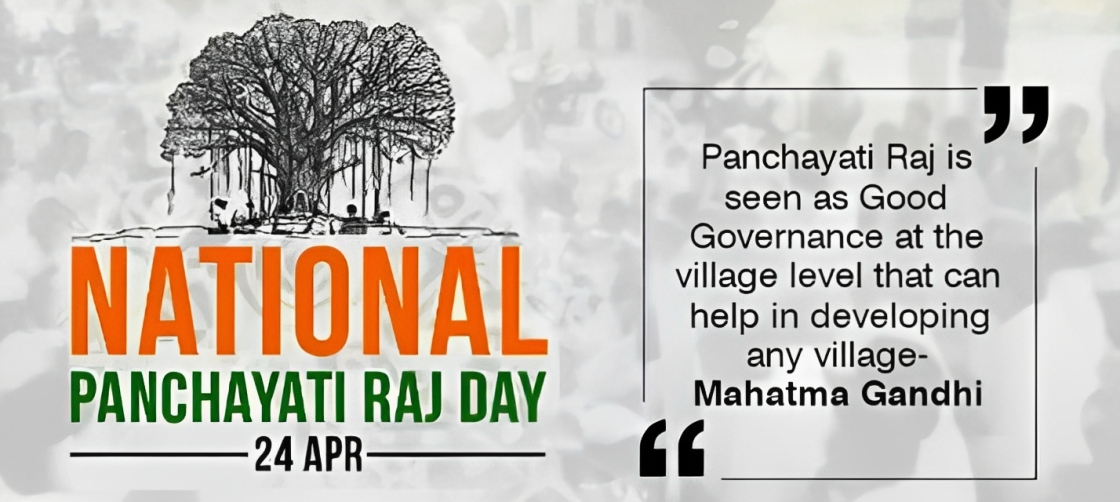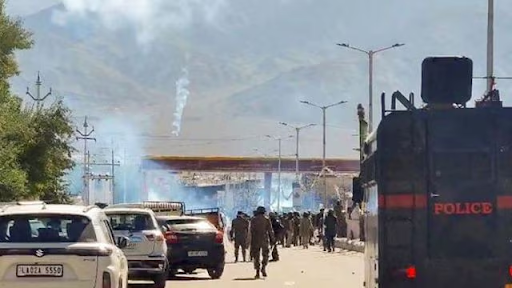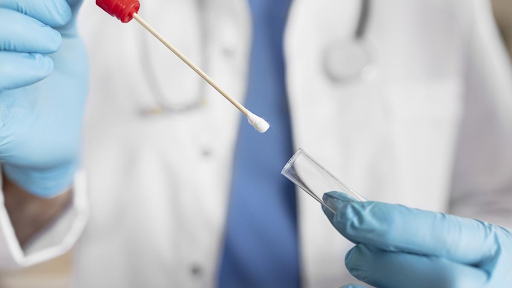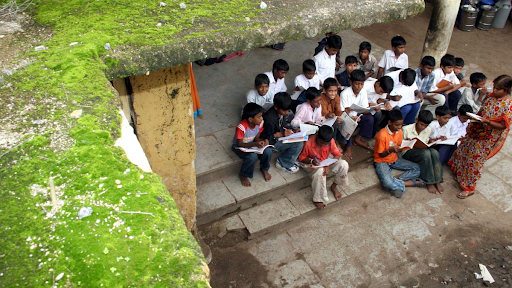Description

Copyright infringement not intended
Context: The Ministry of Panchayati Raj, in partnership with the Government of Madhya Pradesh, marked the National Panchayati Raj Day (NPRD) on April 24, 2023.
Details
- The Ministry of Panchayati Raj, in association with the Government of Madhya Pradesh, observed National Panchayati Raj Day (NPRD) on 24th April 24 2023, in Rewa, Madhya Pradesh.
- The Prime Minister was the Chief Guest at a national ceremony held at the Special Armed Forces Ground in Rewa, Madhya Pradesh.
- The Prime Minister addressed the elected representatives and functionaries of Panchayati Raj Institutions and Special Gram Sabhas across the country
e-GramSwaraj
- The Prime Minister inaugurated an integrated e-GramSwaraj and GeM portal for public procurement at the Panchayat level.
- The objective of eGramSwaraj–GeM Integration is to enable the Panchayats to procure their goods and services through GeM leveraging the eGramSwaraj platform.
- It will encourage Panchayats to usher in the digital revolution where they would have the access to an easy-to-use procurement and payment platform.
- It will boost the rural economy and entrepreneurship along with strengthening the Digital India Program.
Azadi Ka Amrit Mahotsav
- Azadi Ka Amrit Mahotsav (AKAM) Campaign for the theme “Inclusive Development” – “Samaaveshi Vikas” was launched by Prime Minister.
- A dedicated website and Mobile App on “Azadi Ka Amrit Mahotsav – SAMAAVESHI VIKAS” was also launched by Prime Minister.
SVAMITVA Card
- The Prime Minister handed over the SVAMITVA Property Card to select beneficiaries, symbolizing the attainment of a milestone of 1.25 crore property cards distribution under the SVAMITVA Scheme in the country.
- SVAMITVA – Meri Sampatti, Mera Haq campaign under Azadi Ka Amrit Mahotsav – Samaaveshi Vikas – Inclusive Development theme aims to generate 1.50 crore “Records of Rights”/ Property Cards under SVAMITVA Scheme by August 2023.
Griha Pravesh
- Prime Minister conducted the ‘Griha Pravesh’ (ceremony performed when entering one’s new house) of more than 4 lakh beneficiaries under Pradhan Mantri Awaas Yojana–Gramin (PMAY–G).
- At present 4.11 lakh houses are ready for the Griha Pravesh programme.
Jal Jeevan Mission
- Prime Minister attended the ceremony of projects worth about Rs.7,000 crore under the Jal Jeevan Mission.

National Panchayati Raj Day
- India is a country of diversity and unity, where people from different regions, religions, languages and cultures coexist and cooperate. One of the pillars of this unity is the system of local self-governance, known as Panchayati Raj.
- Panchayati Raj is a three-tier structure of elected representatives at the village, block and district levels, who are responsible for planning and implementing various development schemes and programs in their respective areas.
About
- The Panchayati Raj system was given constitutional status by the 73rd Amendment Act of 1992, which came into force on April 24, 1993.
- Since then, April 24 is celebrated as National Panchayati Raj Day every year to commemorate this historic event and to honour the achievements and contributions of the Panchayats in strengthening democracy and empowering the rural masses.
Objectives of National Panchayati Raj Day
- To create awareness among the citizens about the role and importance of Panchayats in rural development and governance.
- To showcase the best practices and innovations of the Panchayats in various fields such as sanitation, health, education, environment, social welfare, etc.
- To encourage the participation and involvement of the people, especially women and marginalized groups, in the decision-making process at the grassroots level.
- To felicitate and reward the outstanding Panchayats and Panchayat functionaries for their exemplary performance and service delivery.
- To review and evaluate the progress and challenges of the Panchayati Raj system and to suggest measures for its improvement and strengthening.
Panchayati Raj in India
About
- Panchayati Raj in India is a system of local self-government that aims to promote rural development, social justice and democratic participation.
- It was formally established by the 73rd Amendment Act of 1992, which added a new part IX to the Constitution of India and gave constitutional status to the Panchayati Raj Institutions (PRIs).
Committees and Commissions
- The Panchayati Raj system in India has been influenced by various committees and commissions that studied and recommended measures to strengthen it.
- Balwant Rai Mehta Committee (1957): It suggested a three-tier structure of PRIs with direct elections at the village level and indirect elections at the higher levels.
- Ashok Mehta Committee (1978): It proposed a two-tier structure of PRIs with direct elections at both levels and more powers and resources for them.
- GVK Rao Committee (1985): It emphasized the need for effective administrative support and training for the PRIs.
- LM Singhvi Committee (1986): It advocated for constitutional recognition and protection of PRIs and their role in national development.
Three-tier Structure
|
Village Panchayats
|
● These are the lowest level of PRIs, elected by the people of a village or a group of villages.
● They are responsible for implementing various schemes and programs related to agriculture, health, education, sanitation, water supply and other local issues.
|
|
Intermediate Panchayats
|
● These are the middle-level of PRIs, elected by the members of the Village Panchayats within a district or a block.
● They coordinate and supervise the activities of the Village Panchayats and also plan and execute some development projects at their level.
|
|
District Panchayats
|
● These are the highest level of PRIs, elected by the members of the Intermediate Panchayats within a district.
● They act as the apex body for planning, budgeting and monitoring the rural development programs in the district.
|
Significance
- It promotes grassroots democracy and civic engagement by involving people in their affairs.
- It fosters social justice and inclusion by giving voice and representation to marginalized groups, especially women and minorities.
- It enhances service delivery and responsiveness by bringing the government closer to the people and addressing their needs and demands.
- It facilitates rural development and poverty alleviation by mobilizing local resources and implementing schemes and programs.
Challenges
- Lack of adequate financial resources and devolution of funds from the state and central governments.
- Interference and domination of local elites and political parties in the functioning of Panchayats.
- Low capacity and awareness of Panchayat members and officials on their roles and responsibilities.
- Poor accountability and transparency mechanisms to ensure participatory planning, monitoring and evaluation of Panchayat activities.
Suggestions
- Increasing the financial autonomy and fiscal transfers to Panchayats based on their performance and needs.
- Ensuring regular elections, reservations and training for Panchayat members and officials to enhance their representation and capacity.
- Establishing effective linkages and coordination between Panchayats and other institutions of governance at different levels.
- Creating platforms and mechanisms for citizen participation, feedback and grievance redressal in Panchayat affairs.

Conclusion
- The Panchayati Raj system in India is an important instrument for achieving grassroots democracy and inclusive development. It has made significant contributions to improving the quality of life of the rural people and strengthening their voice in governance. However, there is still scope for further improvement and innovation in this system to make it more responsive, effective and sustainable.
- National Panchayati Raj Day is not only a day of celebration but also a day of reflection and action. It is a day to reaffirm our commitment to the ideals of democracy, decentralization and development. It is a day to acknowledge the efforts and sacrifices of the millions of Panchayat members who work tirelessly for the welfare of their communities.
Must Read Articles:
Government e-Marketplace (GeM): https://www.iasgyan.in/daily-current-affairs/gem
SVAMITVA Scheme: https://www.iasgyan.in/daily-current-affairs/svamitva-scheme-48
PM Awas Yojana: https://www.iasgyan.in/daily-current-affairs/pm-awas-yojana-32
Jal Jeevan Mission: https://www.iasgyan.in/daily-current-affairs/jal-jeevan-mission-49
|
PRACTICE QUESTION
Q. Panchayati Raj is a system of local self-government in India that empowers the rural population to participate in decision-making and development. It is based on the principle of decentralization and democratic accountability. How can Panchayati Raj be made more effective and impactful in India? Discuss its significance, challenges and way forward.
|

https://pib.gov.in/PressReleasePage.aspx?PRID=1918766











